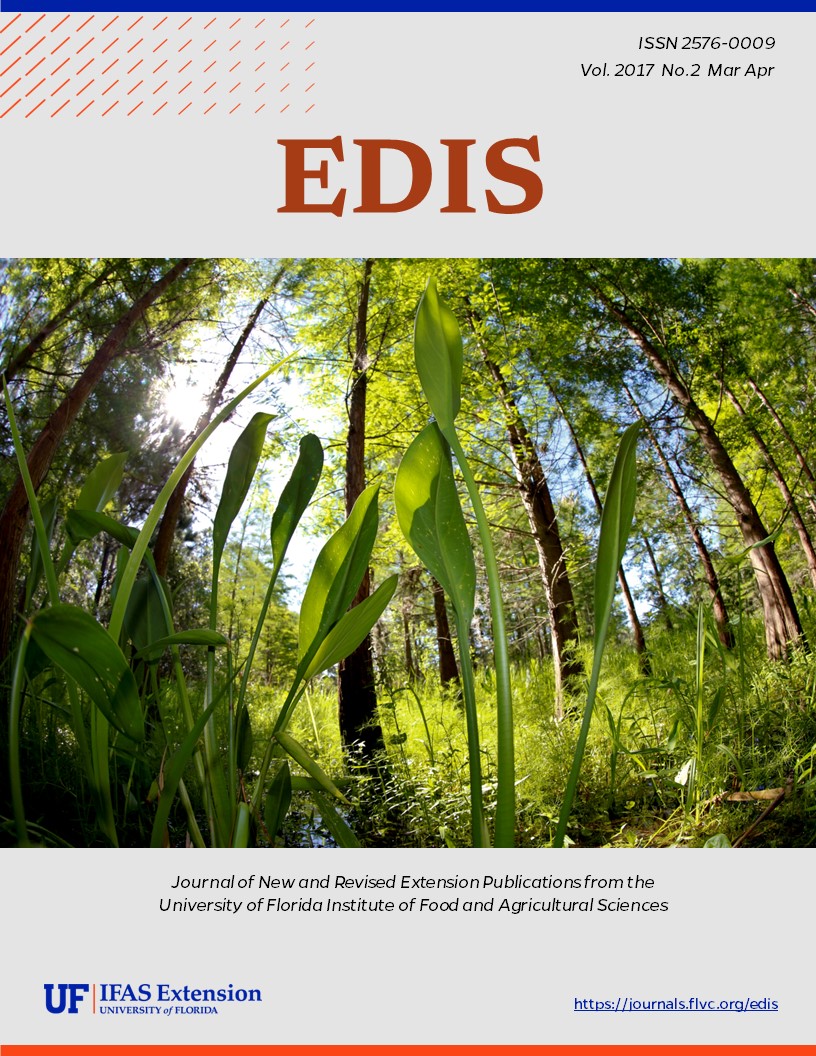Abstract
Working forests are private forests managed not just for timber production but also for a host of valuable ecosystem services like providing for recreation, maintaining habitat for wildlife, and maintaining a healthy watershed. Timber production is an essential ecosystem good or service that supports a number of important industries and provides jobs in Florida. This 6-page fact sheet summarizes the results of several studies to help forest landowners and other stakeholders understand how multiple-use management affects both timber production and other ecosystem services. Written by Sonia Delphin, Francisco J. Escobedo, Chris Demers, Alison E. Adams, and Damian C. Adams, and published by the UF School of Forest Resources and Conservation, February 2017.
References
Alavalapati, J. R. and D. J. Zarin. 2004. "Neotropical working forests." For what and for whom. Working forest in the Neotropics, 279-289. https://doi.org/10.7312/zari12906-017
de Groot R. S., R. Alkemade, L. Braat, L. Hein, L. Willemen. 2010. "Challenges in integrating the concept of ecosystem services and values in landscape planning, management and decision making." Ecological Complexity 7:260-272. https://doi.org/10.1016/j.ecocom.2009.10.006
Demers, C., A. Long, and J. Nowak. 2005. Thinning Southern Pines-A Key to Greater Returns. SSFOR24. Gainesville: University of Florida Institute of Food and Agricultural Sciences. http://edis.ifas.ufl.edu/fr159 (accessed July, 2012).
Duryea, M., W. Hubbard, D. McGrath, and C. Marcus. 1992. Florida's Forest Stewardship Program: An Opportunity to Manage Your Land for Now and the Future. Florida Cooperative Extension Service, Institute of Food and Agricultural Sciences, University of Florida, Gainesville, FL.
Escobedo, F., D. Adams, A. Abd-Elrahman, and T. Stein. 2012. Stewardship Ecosystem Services Survey Project. Gainesville: University of Florida. Available at http://www.sfrc.ufl.edu/CFEOR/docs/EcosystemServices.FloridaStewardshipReport.Jul2012.pdf.
The Florida Department of Agriculture and Consumer Services, Florida Forest Service. 2006. Economic Impact of Florida Forests. http://www.yourforestmanaged.com/press/_doc/_facts/economicimpact.pdf (accessed July, 2012).
Hodges, A. W., W. D. Mulkey, J. R. Alavalapati, and D. R. Carter. 2005. Economic Impacts of the Forest Industry in Archival copy: for current recommendations see http://edis.ifas.ufl.edu or your local extension office. https://doi.org/10.32473/edis-fe538-2005
Florida, 2003. FE538, Gainesville: University of Florida Institute of Food and Agricultural Sciences. http://edis.ifas. ufl.edu/fe538. (Accessed July, 2012).
Stein, T., N. Kil, A. Frank, A. E. Adams, D. C. Adams, and F. J. Escobedo. 2014. Public Land Management Agencies' and Nonindustrial Private Forest Landowners' Perceptions towards Ecosystem Services. FOR 312. Gainesville: University of Florida Institute of Food and Agricultural Sciences. http://edis.ifas.ufl.edu/fr380 https://doi.org/10.32473/edis-fr380-2013
Tallis, H. T., T. Ricketts, A. D. Guerry, E. Nelson, D. Ennaanay, S.Wolny, N. Olwero et al. 2011. InVEST 2.1 beta User's Guide. The Natural Capital Project, Stanford. 260 p.
Williams, R. A., K. Bohn, J. McKeithen and C. Demers. 2011. Pre-Commercial Thinning Loblolly Pines - Does It Pay? FOR188. (accessed July, 2012). Gainesville: University of Florida Institute of Food and Agricultural Sciences. http://edis.ifas.ufl.edu/fr243

